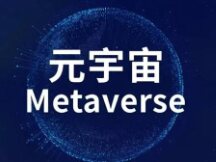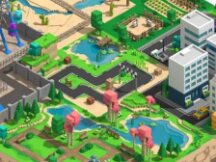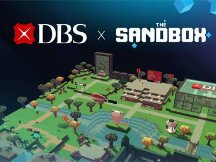Is there a future where tens of millions of dollars per acre could buy land in the meta world?
On November 23, singer JJ Lin announced on Twitter that he had purchased 3 tracks from Decentraland valued at 780,000 yuan, and US rapper Snoop Dogg also announced that he had been in The Sandbox on February 10. Take advantage as soon as the news comes out, not only from the cryptocurrency market, but also many fans outside the circle have started to wonder what this virtual realm is and why ultimately expensive.
According to other news, the virtual earth data is also good, and finally there is the meta-universe. The data collection and analysis platform is online. DappRadar, the world's largest Dapp data and information sharing platform, says "the meta-globe is the next big hotspot in the NFT space."

Latest Virtual Land News Source: Golden Finance
Overall, real estate is improving rapidly with the rapid emergence of the meta-world. However, after the celebration, there were many voices of surprise, on December 9, state media reported an opinion piece about real estate speculation in the Yuan universe. to burn. "
No virtual floor overheating problems? Virtual land is an in-game NFT tool, and the cost of NFT can be divided into three segments: cost, cost, cost, and cost, if the price is too high, it is difficult to support. Lots of avatar-like NFTs have been auctioned off at exorbitant prices this summer, but how do you explain their value and value in use? If the market calms down, it could fall into a state of depreciation which has also been recognized in recent markets. If so, what are the requirements and benefits of the virtual field? Can the price be reversible and control over time and growth?
What is the value of the virtual land?
Virtual Real Estate is an important NFT tool in Metaverse GameFi like The Sandbox and Decentraland. These games are designed to create an entire virtual world, where the virtual domain of the game is a map of the real world. To determine if the virtual terrain is really worth it, we need to start with the concept of Metaverse GameFi.
The GameFi meta-world is all about the player, who prepares the game world, is responsible for the creation and operation of game content, and also manages all meta-world activities. The game started off as a landfill, but after purchasing land, players can use equipment to create events and buildings on their land. The game world as a whole is like a big park that can come out, and once the construction is completed, more and more players will come to visit and play on the land, and the landowners will reap the benefits.
So, the land responsibilities in Metaverse GameFi are as follows: Landowners can set up stores on their land, create games, run tournaments, events, etc. to attract other players and increase the productivity of the range. Players can still enter and play on other people's grounds, but may have to pay for tickets or other activities. Players can also rent or sell land they own, and land under development or approval can be sold for a higher price in the market.
It can be seen that the earth is the most important center of the metaverse cookie game and is the medium for all the activities of the game. Real estate has a very rich application in the game, and its cost is also evident. here.
The cost of use also includes the size of the players and the game, the number of players keeps growing, and the cost of the land can be fully opened. Besides the playability of the game itself and founder of the economic structure, it is also close to the ecosystem of the public chain in which the game resides. For example, Decentraland, The Sandbox and Axi Infinity are all members of the ecosystem. Ethereum, with large users and integrated entities, enabling the entire business environment to share the benefits of Ethereum. Sandbox also selected Polygon as the next expansion plan to improve user experience and security. And Evolution Land of Polkadot will often be Polkadot's access car game to ecology, the game allows you to cross the chain and distribute more money to the public.
The cost of land is often due to insufficiency.
The virtual land is an NFT tokenized asset, each land is unique, based on a joint venture, and the land is limited. For example, in Decentraland World Recreation, out of 90,000,300 * 300 acres, approximately 36,000 acres would be included in the construction of the project, with the rest of the land being sold to users. There are a total of 166,464 lots in the sandbox, 90,601 in Axie Infinity, 64,442 in Evolution Land ...
In some Metaverse GameFi games, the terrain is divided into different types and the concept of content is expressed. Depending on the type of soil, resources of different terms can be found, these resources have different uses and benefits, they become less common.
In terms of respect, first of all, the market comparison of the entire cryptocurrency market and the popularity of the meta-global strategy will affect virtual real estate prices. Currently, lands in projects like Sandbox, Decentraland, and Somnium Sapce mostly cost native SAND, MANA, and CUBE tokens. monetary value.
Secondly, the game has received a lot of attention due to the collaboration of Metaverse Game Pie and many celebrities, brands and IPs, while attracting people from all walks of life. for this game, land prices increase. In addition, larger floors are often more expensive. Because more content can be generated in these soils, more energy can be obtained, more productive results can be achieved, and more resources and resources are promised. In some games, projects with large capital or convenient transportation and close to the core of the map are more profitable.
Overall, the value of virtual land in Metaverse GameFi is supported, and ultimately it is inextricably linked to the technology, ecology, and traffic of the game itself.
Mutual support of the virtual playground and playground ecosystem
With the continuous improvement of the terrain, a game ecosystem of GameFi's metFi universes began to develop. During this time, each participant is the creator of the content, their creative energy can be fully realized, and more detailed designs are developed in the project. On the other hand, many game participants can create their own small ecosystem to support the game world.

Players create game scenes from Decentraland Source: youtube.

Snoop Dogg movie in a sandbox (left) and the story of "The Walking Dead" (right)
A wide range of industries, activities and ecology have developed in the virtual realm, including leisure, art theaters, theaters, businesses and venues, businesses, hobbies, colleges, casinos and more. These sites not only integrate many real world features into the meta-edge game, but also develop simple business models. For example, now Decentraland is designed for this by default, and there are many NFT flags in the game, giving players the freedom to take the shuttle to visit the Open Sea Industry Trade. Overall, the richness of the gaming ecosystem and the development of industrial models will increase the value of tokens as a medium of exchange and further enhance the value of virtual land.

Decentralized and generative art exhibition

Thanksgiving from Decentraland
In turn, virtual landscapes can support the gaming ecosystem.
Judging by the performance of some of the newer sports, jobs that depend on financial support are often unsuccessful and will have “income” issues in user reviews. Players can have the joy of creating land, it is quite possible that the material and games they develop will be received by many people, and the players will develop in the game to be real and visually lost. Cost, time, energy and imagination can, to some extent, motivate players to participate in the long run. Some gamers even write captions on the Discord gaming channel, with an understanding of the realm.
Virtual landscapes can also contain bubbles, carry more tokens, and handle the financial security of the game. While the gaming ecosystem is still thriving, the issue of in-game token oversubscription arises as players regularly invest money. time, energy and resources in the game. An increase in value could put the whole trade at risk if more players trade their chips this time around. The absence of Second Life, an online sandbox game, is largely due to the decline in the value of the in-game currency that year. In fact, many P2E games today come with the hidden risk of increased coins and high sales. However, the presence of terrain can be part of the bubble and reduce the height by injecting some super-deposited tokens in such rare "buildings".
For lack of expertise, the project is preliminary,Are there bubbles in virtual real estate trading?
In the comments above, we've identified the key role the terrain plays in the cookie metaverse's grand game vision, but at the same time, we also need to address the performance issues.
In fact, the current GameFi meta-world is not easy to play, compared to the powerful racing or online games of today, it looks good if it sounds good and is homemade. Players can be separated by gameplay. Of course not here. The real purpose of gaming metasites is to allow players to immerse themselves in the game 24/7 and manage their online lives as if they were in the real world. For this, not only blockchain technology but also technologies such as VR, AR, AI, 5G and the Internet of Things must be implemented, and the path must be traveled. getting into the present situation is long and difficult.
First, take a closer look at blockchain technology. Metaverse GameFi simultaneously transfers multiple high-end files by gamers, requires high TPS, and supports various plugins like security and file storage. Another of the issues stems from the importance of blockchain technology, which is difficult to eliminate, such as heritage security issues due to lack of policies, and unclear multiple roles and management delays due to impacts. major.
Other technologies have more problems to solve. Jihe.com pointed out in a podcast that at this point all games are available for integration into 3D simulation sites with multiple impact limitations. For example, it is said that a virtual concert with 27.7 million people in a nightclub can accommodate over 1,000 people on each server, and watching the concert is a must not well, and only a few. interactions in it. As far as this virtual gig goes, it's a far cry from the “enterprise-less world time synchronization” that Metaverse envisions, and data granularity and endpoint issues need to be addressed. .
Some games that lack skills, are screened in advance, and do not meet knowledge and play standards, may not appeal to real players. Use the virtual housing market. For example, recently discussed the meta-space game project in China is not involved in research and development of related technologies, no technology or patents, no, there have been major changes in the core business of the company, and the project has not yet materialized. to start. The prices of the company's products were repeated several times with daily restrictions, the virtual garden was provided to users during internal testing, and the asking price for Xianyu reached 500,000.
And some sports companies that explore the limits of advanced technology may actually make small changes, which has already been greatly appreciated. For example, polysteam tries to use computation to render phase 3A, when parsec is late. Less than 1 video entry station. Traders have to be patient and careful as this could be a mountain move by some stupid old man.
The above are the technical issues facing Metaverse Game Pie, and this is also the issue that determines whether Metaverse Game Pie is secure and whether the virtual garden it contains is secure. The foam is available in the market in a place where the concept is not well used, but the bubble is also one of the first products, and the heat and the capital of the foam are also important for the updates.
In short, the value of the concept of evolution and perfection of meta-world technology, as well as the value of virtual lands in the game, is a gradual process of gamers, not secondary market speculators. From virtual to real, from visual to tangible, there is still a long way to go to reduce the real cost of design and construction. GameFi, a leader in meta-universes such as The Sandbox and Decentraland, has developed a standalone business based on virtual lands and created an ecological model, and we hope these games surprise us even more. I want to do it.

Scan QR code with WeChat































